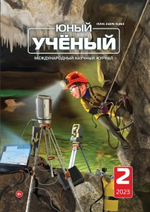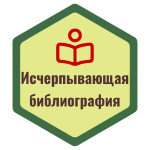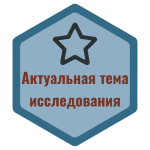COVID-19 was one of the main sources of distress for many people in 2020. The pandemic has impacted many fields of industry, especially the educational process of the whole world. A lot of academic organizations adapted to online format their curriculum. The topic was chosen because the altered format of learning during widespread influenced learning pedagogy affecting both students and teachers: it led to the closures of schools, higher education facilities, and institutions in many countries for distance learning. Although, new the format of exam taking. I consider that the Pandemic turned upside down the academic process of the whole world. Strict quarantine measure has clearly illustrated that the old model of training is inappropriate to today's needs and the educational process should develop from another angle with breakthroughs.
Mini research questions:
— How sharply has the training system changed during Pandemic?
— How did mobile apps affect students’ learning during distance learning?
— What was the influence of isolation on examinations?
Key Terms:
Quarantine is a strict measurement when everybody should remain in a home bubble (Godber & Atkins, 2021).
Social distancing is when people are mandatory to wear face masks and keep a 2m distance from each other (Godber & Atkins, 2021).
Emergency Education is when authorities forced schools, training institutions, and higher educational facilities to close for the remote learning process (Pokhrel & Chhetri, 2021).
COVID-19 is a Pandemic due to which the whole world was quarantined for 2 years and the largest disruption of education systems in history (United Nations, 2020).
For the past 2 years the Pandemic throw into confusion educational systems around the world in order to support the continuum of learning. Because of that, global developers and organizations evolved the method of training by deploying new system with some advancements. As European Learning Foundation (2020) states the pandemic changed forever the way we have taught. In addition, when the pandemic just caught up with humanity, students were forced to stay in their home bubble and prepare for online learning. This unexpected shift to remote teaching was complicated by the fact that «emergency distance learning» in response to the crisis was not what many people expected, it was not deliberately designed online teaching system (Scherman, 2020). Many difficulties appeared after that with downloading programs, connecting to lessons, and completing assignments. The pandemic has demonstrated that the old model of initial training—something that is seen as giving a skill for life—is inadequate for today's needs (Stanley, 2020). Therefore, new rules and ways of solving these obstacles have been developed. For instance, individual or group work and home tasks that are completed on Microsoft Teams, Zoom, and Google Meet or the lesson duration that was shortened by 50 %, although the exam scores that were increased and the time that was decreased. For a year and a half of quarantine, people adapted to novelties as best they could; aside from new rules, lesson duration, and new teaching methods, things that had never been used before appeared. This led to the fact that the students began to think faster and figure out what they needed to write.
Even before COVID-19, there was already high growth and adoption in educational technology and applications. These were good prospects, because this is exactly what the students needed during the quarantine. With global edtech investments reaching US$18.66 billion in 2019 and the overall market for online education projected to reach $350 billion by 2025 (World Economic Forum, 2020). Whether it is language apps, virtual tutoring, video conferencing tools, or online learning software, there has been a significant surge in usage since COVID-19. Ahmed and Arsons (2013) also state that digital learning has shown promising results in education by enhancing student engagement and learning success. Research on digital tools to improve student performance has so far focused on in-class Audience Response Systems (ARS) — also known as ‘clickers’, online tutoring software (OTS), learning management systems (LMS), and online homework management systems (OHM) (Voshaar, Knipp & Loy, 2021). Due to remote learning, students first need computers or laptops and certain applications to attend classes and do the assigned tasks. Sites or applications that can virtually write you a summary or sites that will help you prepare for exams have appeared over time. While sitting at home and having plenty of time, students have made their learning effortless thanks to apps. For example, Nebo, Microsoft OneNote, and Evernote could collect your syllabus; Foxford, Canvas, Khan Academy, and Brainly create online lessons and assignments where students can both learn and share information with each other. At Google Meet, students from unlimited countries could join the meeting and either help each other or chat.
Despite the benefits of distance learning, there were many difficulties with examination at the end of the emergence distance learning. The United Nations (2020) anticipated that a postponement or complete cancellation of the entire examination system was possible, depending on the duration of the COVID-19 lockdowns globally. But a vaccine was invented and it all ended much earlier that the students who allegedly studied at distance learning passed the last exams and showed the worst results in recent years. Such statistics were visible from the countries of the Commonwealth of Independent States, South America, and Eastern Europe (Barnum, 2021). But still there were cases when the cancellation occurred, due to the COVID-19 outbreak and national lockdown in India, various entrance-level examinations (such as BITSAT 2020, NATA 2020, CLAT 2020, MAT 2020, and ATMA 2020) were rescheduled (Pokhel and Chhetri, 2021). Subsequently, it was difficult for students to submit full documents to universities
As a result, we can notice that the coronavirus has affected the field of education very much, almost shaking the examination system, even if many programs and alterations have had a good impact on students' studies. The strict quarantine measures illustrated the whole world that everyone should be ready for upheavals and new changes. People should use this crisis to take a fresh look at the education system, at the strategy as a whole, and then take action to improve the reliability of distance learning so that problems no longer arise when we meet new obstacles in humanity.
References:
- Barnum M. (2021). The pandemic’s toll: National test scores show progress slowed, gaps widened. https://www.chalkbeat.org/2021/7/28/22596904/pandemic-covid-school-learning-loss-nwea-mckinsey
- European training foundation. (2020). How the pandemic has changed forever the way we teach. https://www.etf.europa.eu/en/news-and-events/news/how-pandemic-has-changed-forever-way-we-teach
- Godber, K., & Atkins, D. (2021). COVID-19 Impacts on Teaching and Learning: A Collaborative Autoethnography by Two Higher Education Lecturers. https://www.frontiersin.org/articles/10.3389/feduc.2021.647524/full
- Pokhrel, S., & Chhetri, R. (2021). A Literature Review on Impact of COVID-19 Pandemic on Teaching and Learning. https://www.frontiersin.org/articles/10.3389/feduc.2021.647524/full#B41
- Scherman, R. (2020). COVID-19 and Beyond: From Remote Teaching and Learning to the ‘New Normal’ in Higher Education. https://www.frontiersin.org
- United Nations. (2020). Policy Brief: Education during COVID-19 and beyond. https://www.un.org/development/desa/dspd/wp-content/uploads/sites/22/2020/08/sg_policy_brief_covid-19_and_education_august_2020.pdf.
- Voshaar, J., Knipp, M., & Loy, T. (2021). The impact of using a mobile app on learning success in accounting education. https://www.tandfonline.com/doi/full/10.1080/09639284.2022.2041057
- World Economic Forum. (2020). The COVID-19 pandemic has changed education forever. https://www.weforum.org/agenda/2020/04/coronavirus-education-global-covid19-online-digital-learning/










